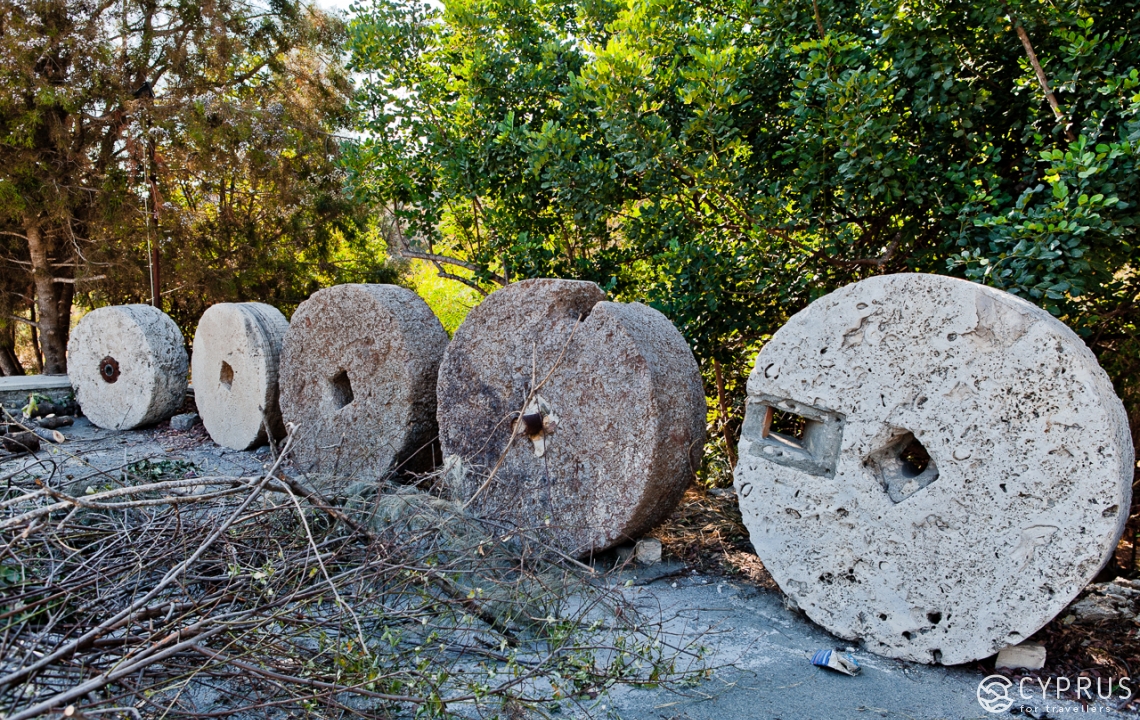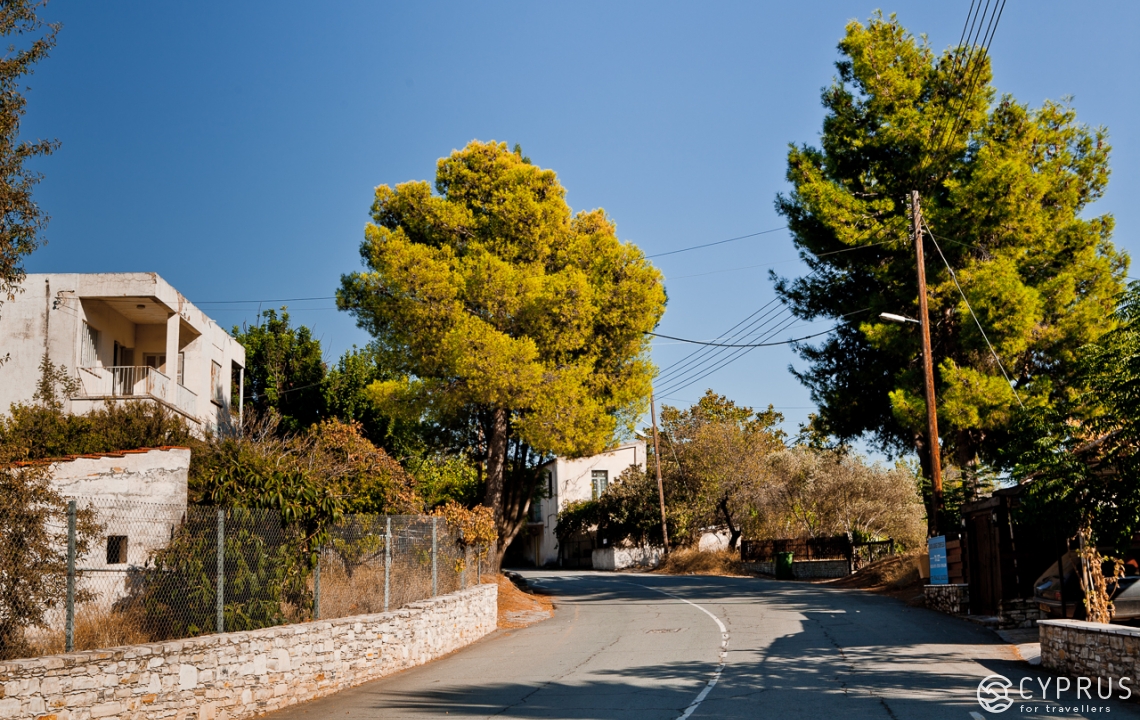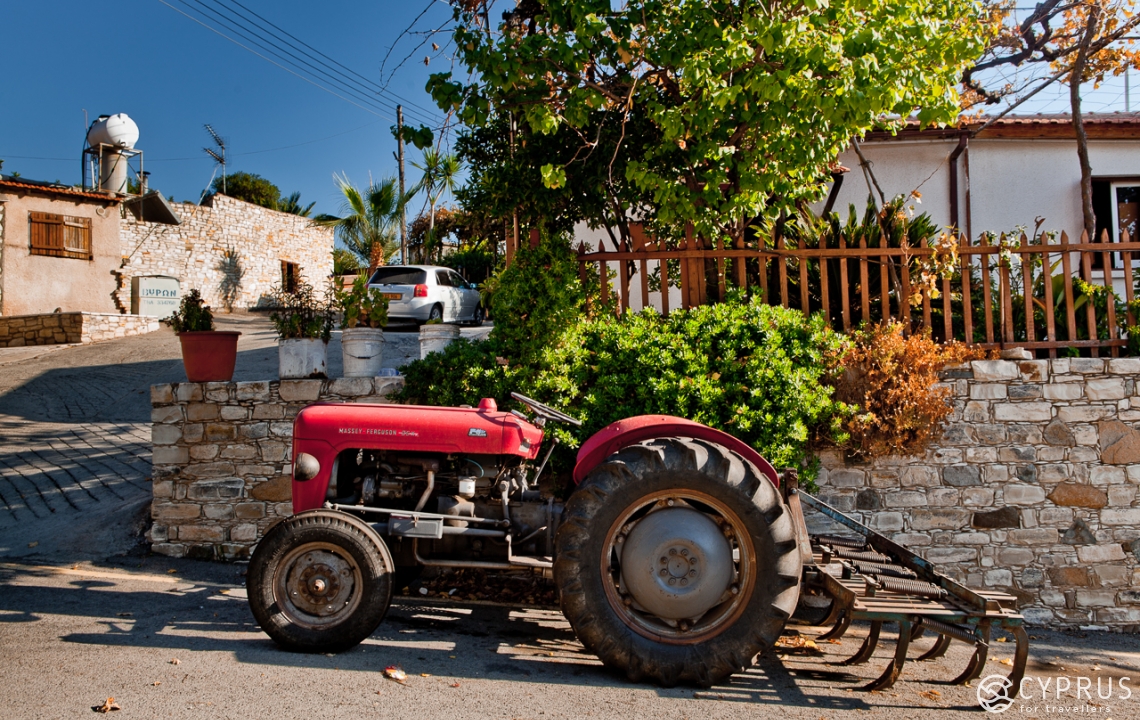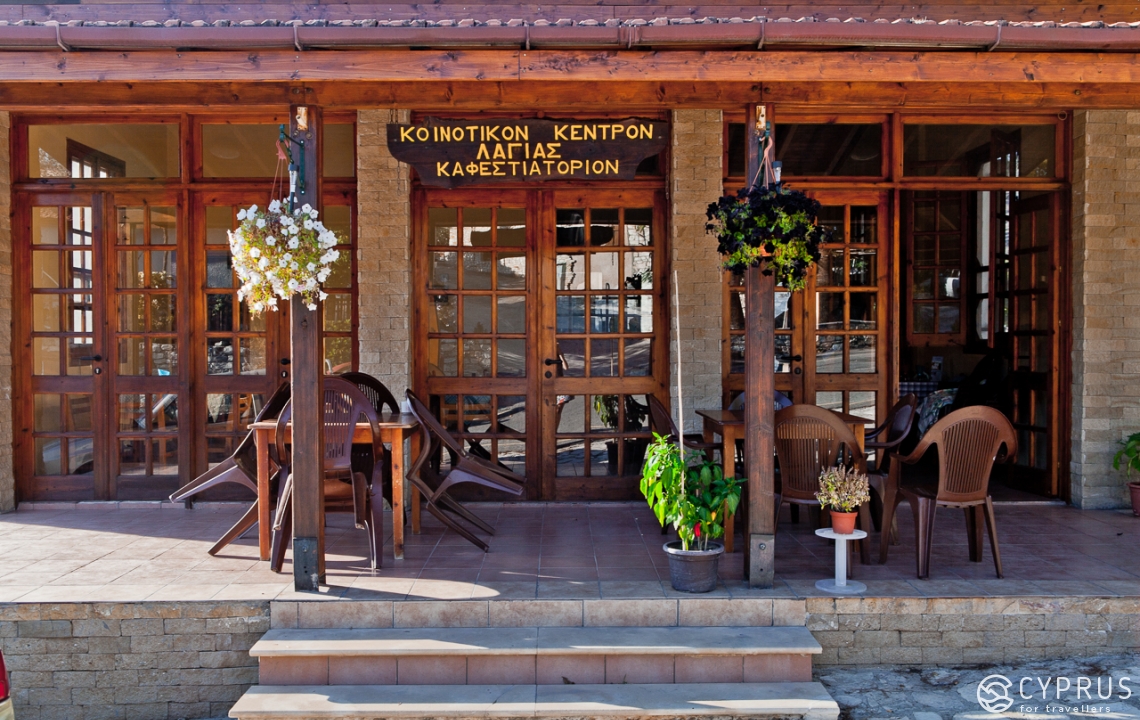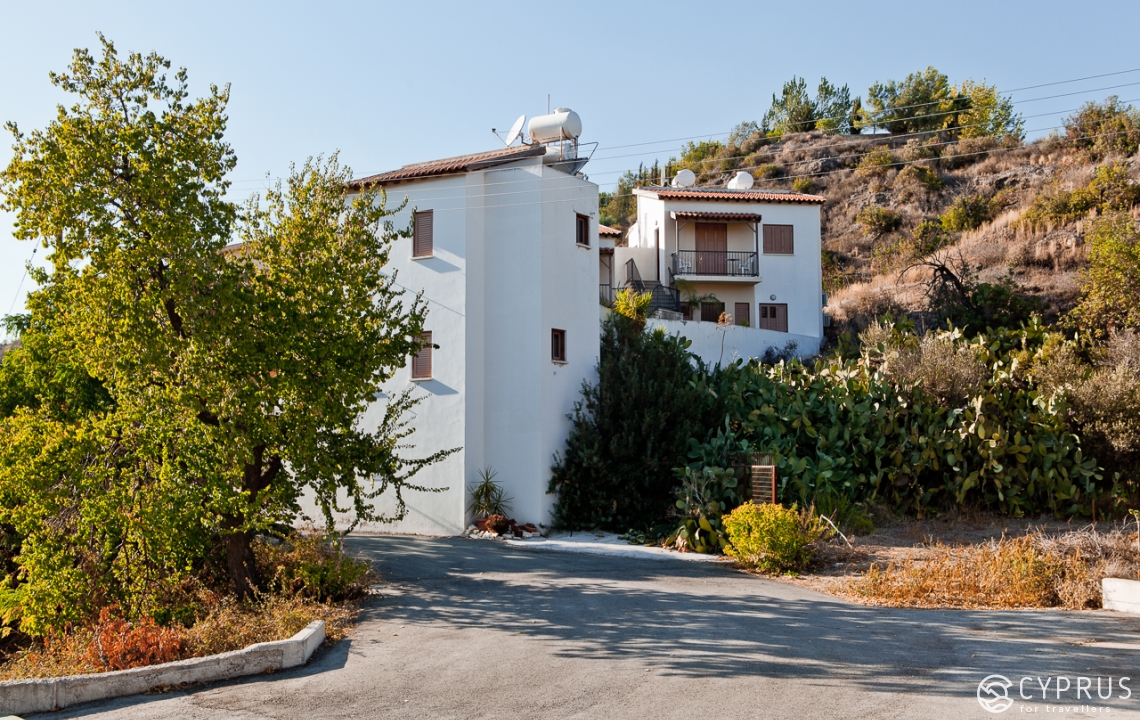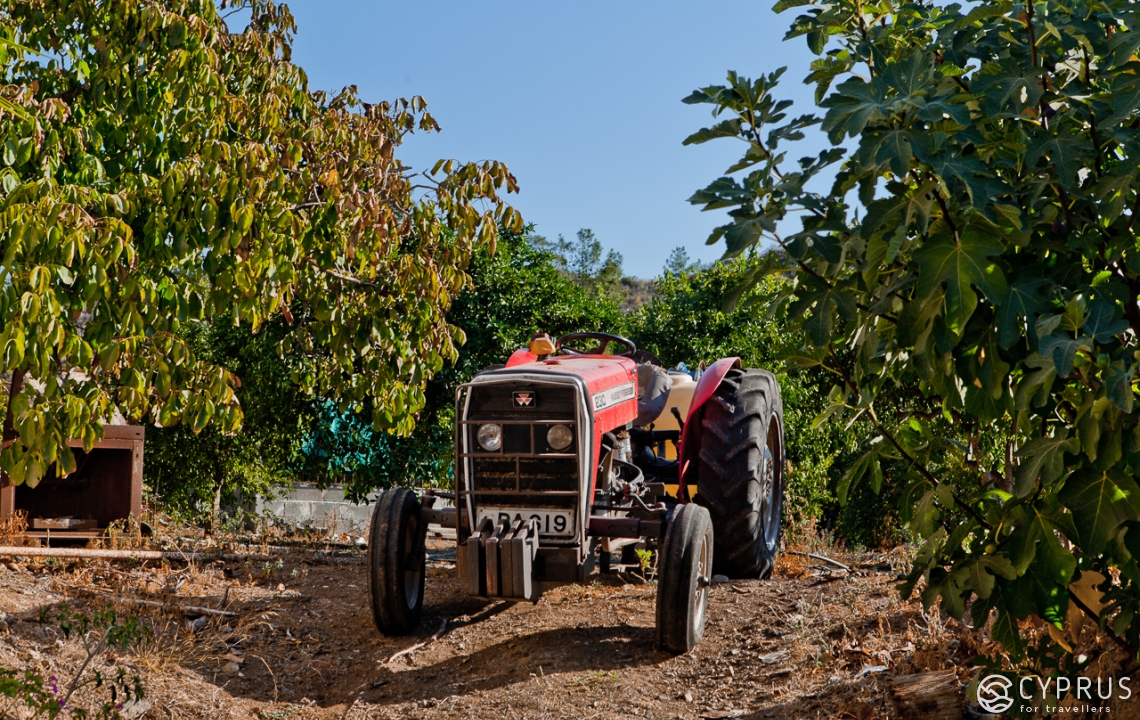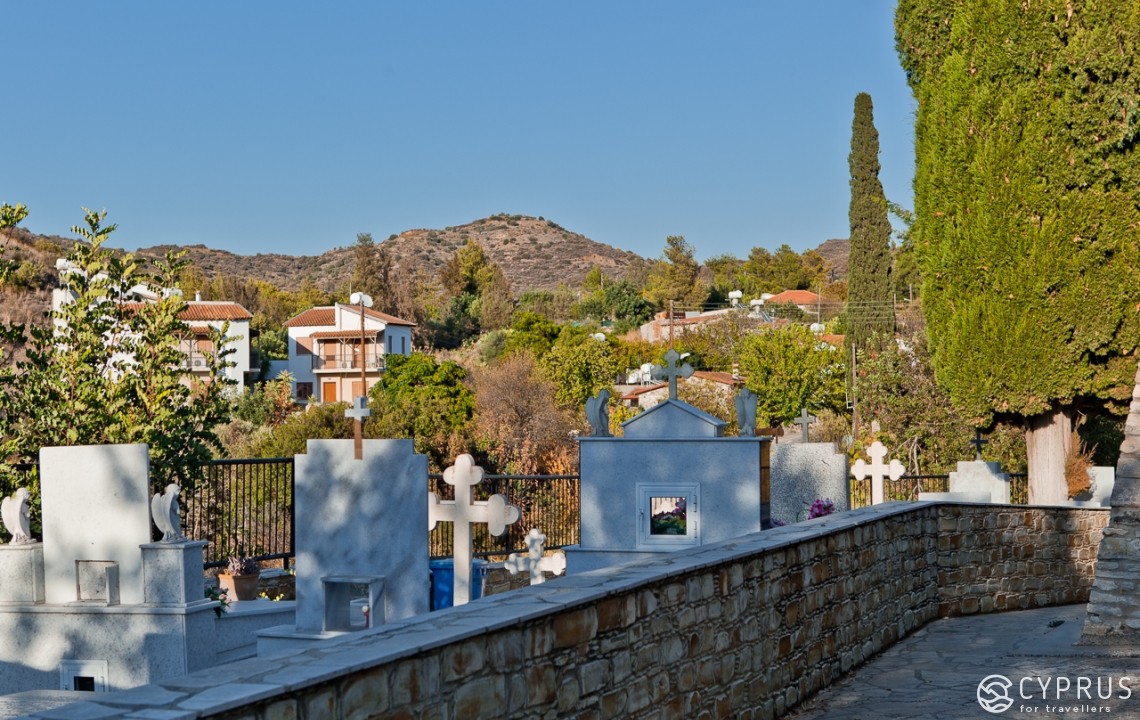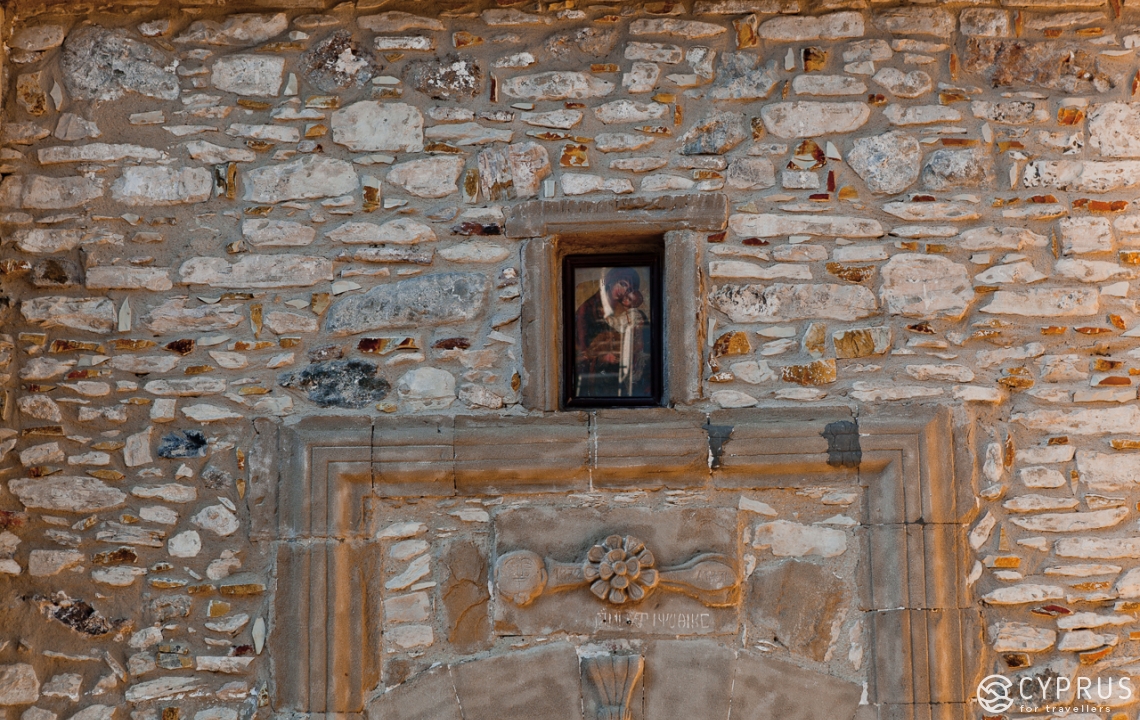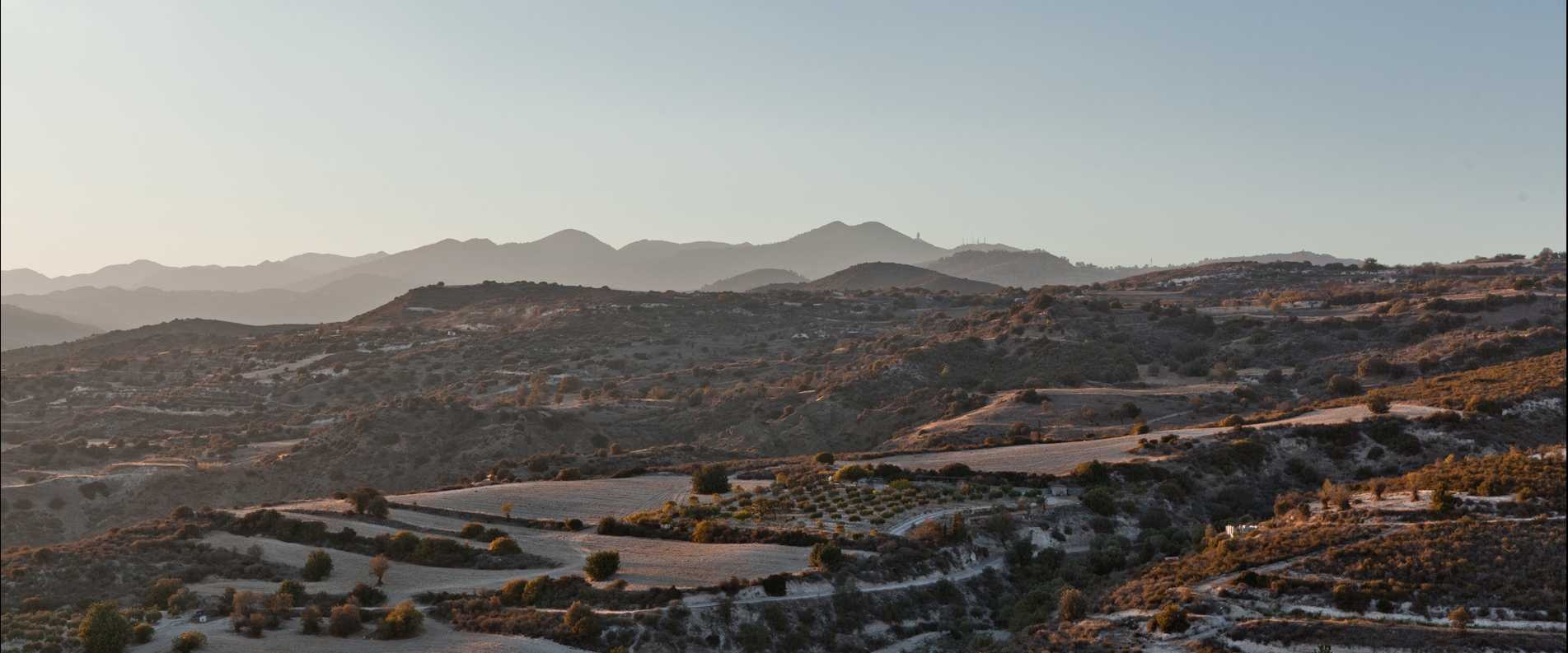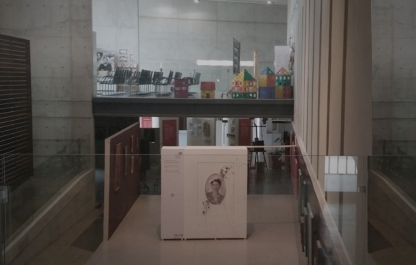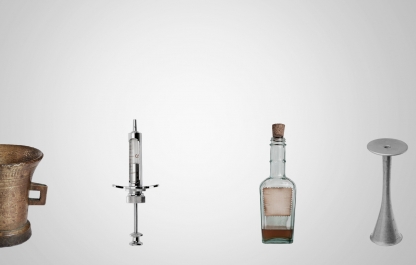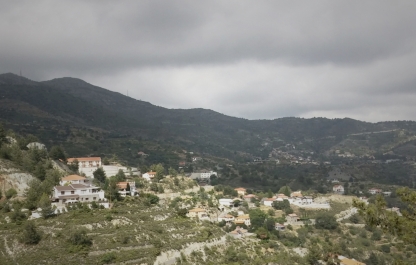Located in the district of Larnaca, to the south of Nicosia, Lageia directly neighbours the villages of Vavla, Chirokitia, Ora and Ay Vavatsinia. Separated from Lefkara by only 7 km, it is one of the least populated areas on the island. If 119 people lived there in 1946, then at the present moment the population numbers merely 22 residents.
You’ll no doubt notice the road to Lageia (in Greek, Λάγια или Λάγεια) leads you through a thick forest of magnificent pine trees. You can stop in a lot of places and marvel at the panoramic view of the landscape it reveals: this encompasses the terrain from the northern “limits” of Larnaca and stretches right up to the outskirts of Limassol. The village — nowadays a small focus of traditional houses scattered closely to one another, along with several large villas — lies on the southern slopes of a spur on Mount Kionia. Having arrived, you realise that Lageia is indeed a quiet, pleasant place. Once you’ve driven into the village, you can immediately see rooms on offer for rent, while for those with a desire to be immersed in the undisturbed peace and tranquillity of this area, some of the houses are for sale (we’ll come back to this a little later).
We headed for a stroll around the vicinity, for the time being leaving our cars on the main street outside a small cafe (its cordial owner was expecting us to return for lunch), situated close to a row of gigantic millstones made of shell and other rock, standing by an old barn.
In actual fact, the only way to look around the village is by going along one — specifically the most “historical” — of three backstreets, away from the cultural centre and towards the courtyard of the Church of the Assumption. This, by the way, is a beautiful route through the gardens, one which we suggest every guest to the village should take.
Pomegranate trees stretch out over walls and fences onto the street, revealing their ripened fruits dangling from branches above the pavement. The sickly sweet aroma of fruit is carried from vegetable gardens and vacant plots, for some reason overgrown with cactuses. A multitude of needles lie in spiky debris, both thin and transparent, deceptively luring inexperienced tourists with their bright colours. (Naturally, the majority of our “expedition’s” members, less vigilant due to being tired and from what they had experienced earlier, rushed straight into the free roadside “treat”. As predicted, they provided themselves with another form of amusement for while they were walking, one which required a bit of gumption and a stiff upper lip — removing needles from the palms of their hands, as well as of their companions).
We started to descend along the road — following the signs — to the church of Panagia Eleusa (The Assumption): the church “acquired” this dual name due to the Eleusa icon situated there. The main church is located in the older part of the village, in the south-west, against the backdrop of an unforgettable landscape. There is also an old fountain and a very old village mill nearby.
The Church of the Assumption is the only one in the Larnaca region and dates back to the late 18th century. The church and the icons in its interior are all unique. For instance, Rupert Forbes Hannis (1899 – 1965), a British collector and researcher of Cyprus, noted after his visit in 1936 that he had discovered several remarkable 16th-century icons inside. The portable icon of The Eleusa (early 19th century) drew particular attention from the scientist, as well as a Madonna (1559) from late Venetian rule. This image is traditionally attributed to the brushwork of the great icon painter and Cypriot, Luca Tokhniti. The image of Eleusa represents one of the samples from the canon of the so-called Glykophilousa (or “Sweet kisses”). Below you can see the inscription: ΔΕΗΣΙΣ ΤΟΥ ΔΟΥΛΟΥ ΤΟΥ ΘΕΟΥ ΙΑΚΩΒΟΥ ΤΟΥ ΚΟΣΤΑΝΤ[Η] ΚΤΗΤΟΡΟΥ [ΤΗ]Σ ΑΓΙΑΣ ΜΟΝΗΣ ΤΑΥΤΗΣ ΑΦΝΘ ΧΥ [1559].
The translation roughly means —The pleading of Divine Yakovos the slave, son of Constantine, founder of the Holy Monastery. 1559”
It must be said that numerous researchers believe this inscription indicates to the period during which the Venetians raised taxes in order to construct defence installations, due to the enhanced threat from the Ottoman Empire. However, it isn’t mentioned at all in G. Hackett’s three-tome collection “History of the Orthodox Church of Cyprus” (London, 1901). ed. by Neoclis S. Kiriyasis.
The day of the Assumption of The Mother of God is celebrated on the 15th of August (one of the government holidays in Cyprus and Greece).
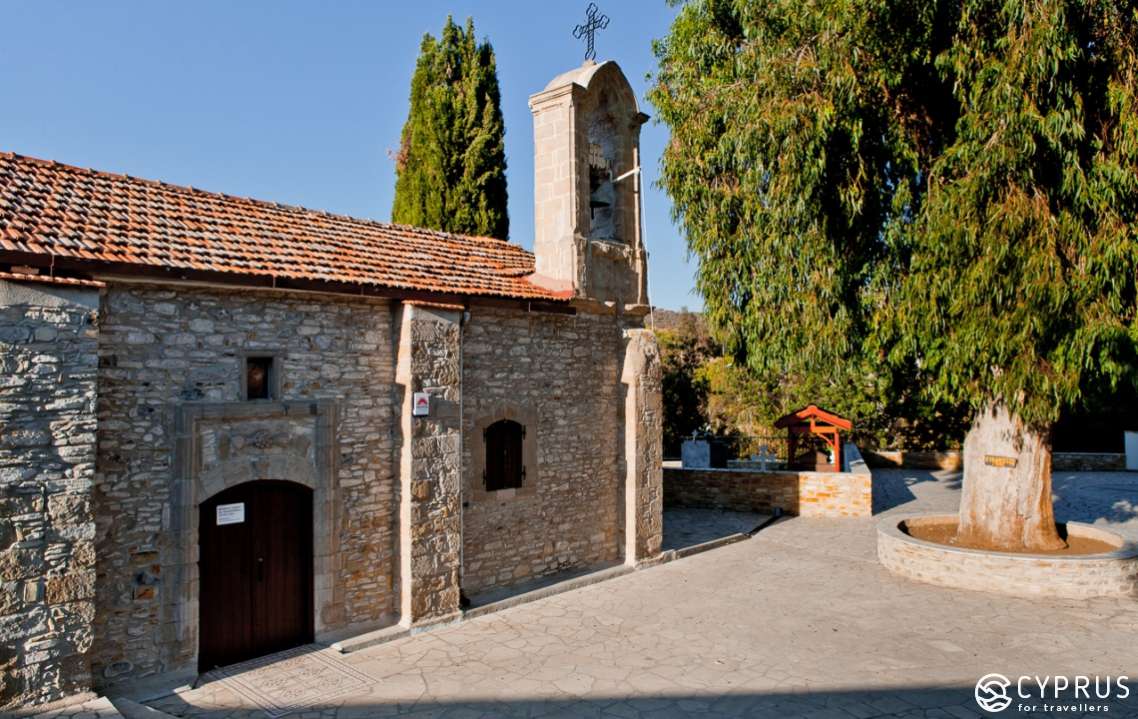
Facts from Pastoral Life:
Over the course of the year, numerous orchards bear fruit in Lageia, where you can find growing: citrus trees, as well as apricot, fig, pomegranate and carob. Vineyards and olive trees are also cultivated.
A huge Eucalyptus stands in the courtyard of the Church of the Assumption, though grave battles once raged around it: despite the old tree’s “historicity” the locals residing in its immediate vicinity demanded deep cutbacks from the Department of Forest Maintenance, due to the danger of massive branches snapping and falling (which happened one night). Not only could this have harmed the roofs on neighbouring buildings, but also the burial sites on the church premises. The story was also brought to light on TV (channel ANT1), however, experts which came to examine the situation were convinced of the contrary: traumatic cutbacks to the behemoth may have inflicted more serious issues than those which the residents were trying to avoid.
As for the fountains… travellers can see and even “count” (as guides suggest) them: this is the name given to the springs which once existed in Lageia, traditionally decorated with stone, which had deepened hollows for collecting water. Several of them were built into the foundations of houses, testifying to the great importance of such a “water supply system” for locals: it wasn’t disassembled, but on the contrary, has been preserved in the walls of the houses in the form of stone niches. We passed through an old niche on our way dating back to the year 1807. After checking, there didn’t appear to be any water in it.
There’s a rather curious spot near the church (not reaching it), which we discovered while surveying the vicinity — παλια βρυση, a dry stone river channel, branded as a “spring”. It’s worth descending the wooden staircase to the very bottom of the ravine, which still probably fills up with streams of water in winter. According to a vivid description given by our friends’ son, it would be a suitable spot for “dinosaur hunters”. The “setting” was certainly very promising: some incredible plants were growing on the cliffside opposite, resembling aliens from other worlds or plants from prehistoric ages: gigantic umbrella plants more than 5 metres high and Kraken-like agave trees whimsically extending their metre-long “tentacle”-leaves… while from above, you could see prickly lianas of incredible sizes hanging down over their prey. Well, meeting dinosaurs at that moment wasn’t part of our plans, so we decided to move on.
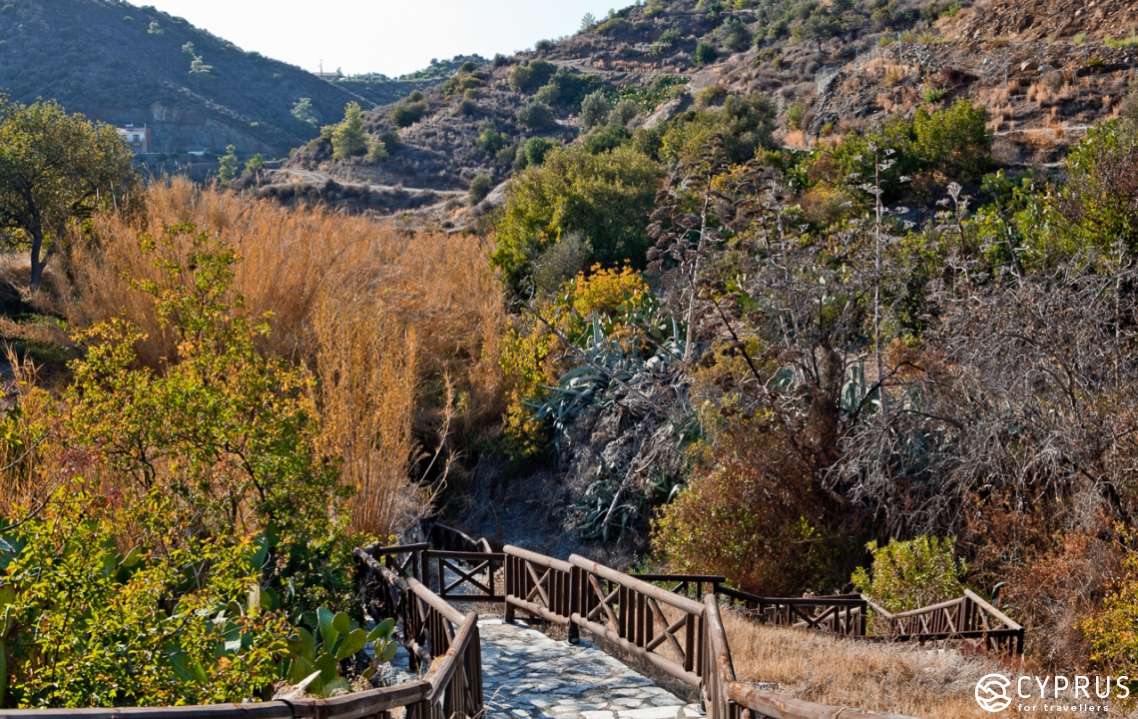
Lageia is one of the “wine” routes in Cyprus and part of the so-called “Kommandaria zone” (in Greek: κουμανδαρία), in this case: the vast territory of the Troodos foothills, where vineyards cultivate two sorts of wine (Xinisteri and Mavro), the fruit of which is used to manufacture Cyprus’ famous dessert wine. Not only is it part of other routes, for instance, the annual autumn rallies (the strip from Lageia-Kalavasos), but also, thanks to its location, this is a beautiful place for outdoor activities: walking, cycling, or mountain biking.
For those wishing to get involved in village life, the locals will happily offer you the chance to take part in gathering the fruit harvest for winter and will demonstrate the production of olive oil in an old wooden mill.
The village is a small distance from Larnaca (41 km) and Limassol (48 km).
The head of the community: Mr Nikos Nikolaou, telephone: +357 24342918.
Where to Eat:
It goes without saying, in the cafe “Layia Cafe lounge” (owned by Mr Nik) on the main road. In this cosy and modest spot, you’ll be fed tasty homemade meals and be provided with some interesting interactions amongst the locals, who traditionally get together “at Nick’s” to discuss the village news, drink some beer with friends and watch the match. Breakfast, lunch and dinner are served throughout the day. Everything is very democratic taking into account the population size: drinks (any) are 1-3 euro, dishes are primarily from Cypriot cuisine and cost from 3-9 euro.
Telephone: +357 97830932 (Mr Nik).
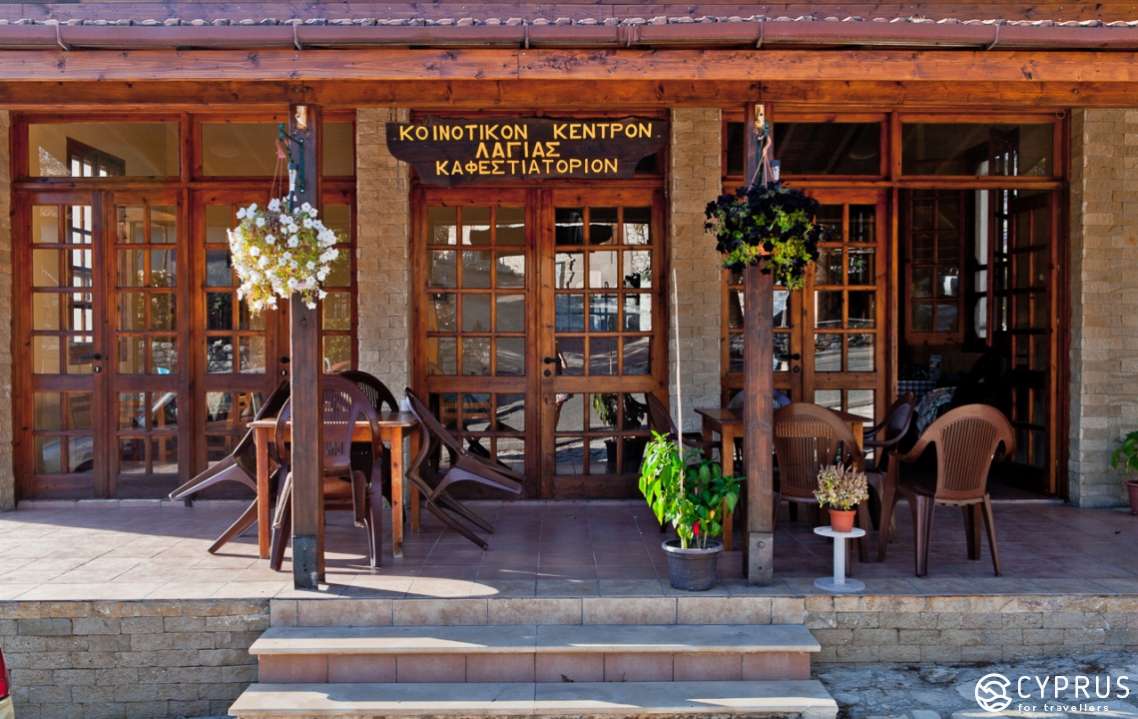
Where to stay:
Layia Lodge Complex is equipped with services for travellers, along with a large swimming pool. You can choose from any of 8 rooms here: from studios to two-bedroom apartments. All the rooms are fitted with completely furnished kitchens and rooms have roof ventilation.
Contacts: +357 4343002 (tel.), +357 4343001 (fax)
Website: www.layialodge.com.cy
Email: malay@spidernet.com.cy
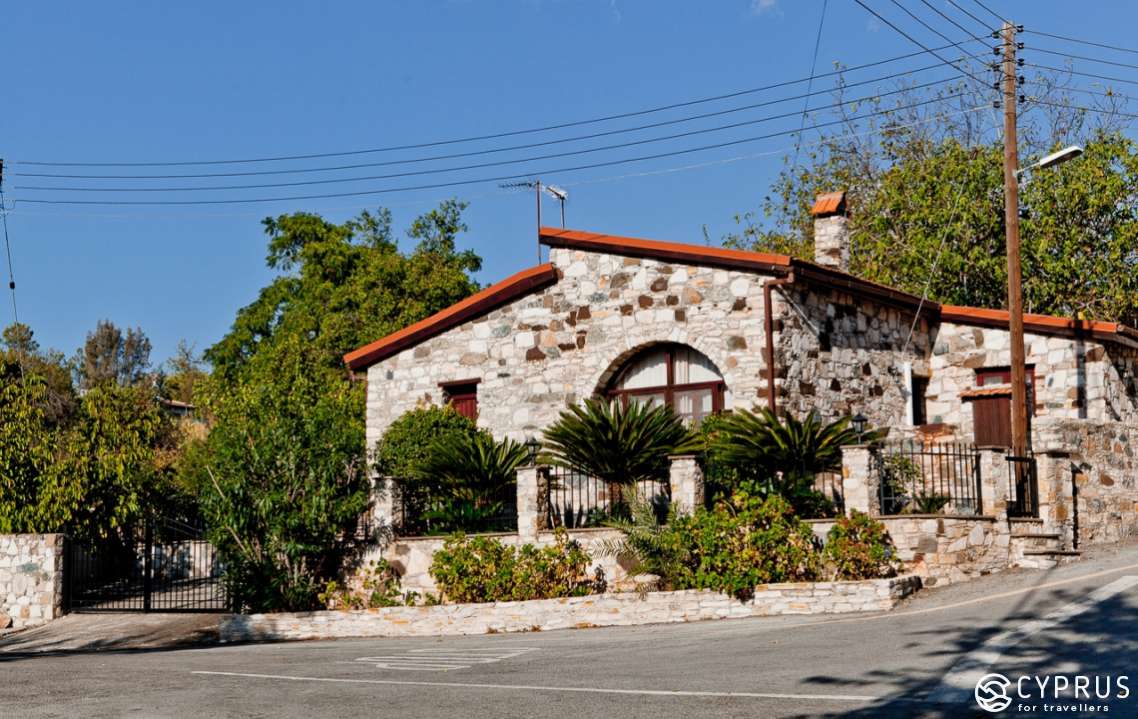
How to get there:
By car: Drive to Vavla (see our article). From Vavla, take the signposted T-junction heading for Lageia (5 mins).
You can cut through Chirokitia (along the A1: Nicosia – Limassol), Exit 14, then follow the signposts (14 mins).
Bus Routes: 03, 403, 404, 451. For more information, visit www.cyprusbybus.com.
Have a great time and see you soon!
